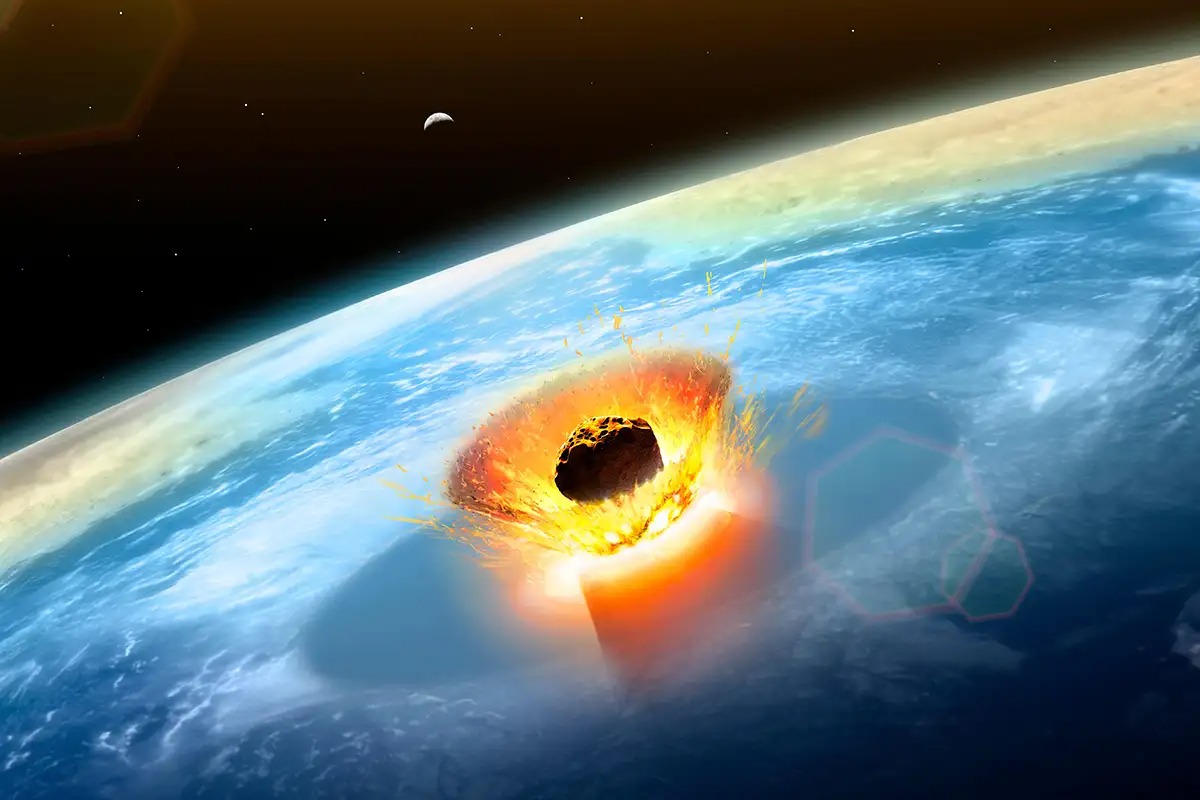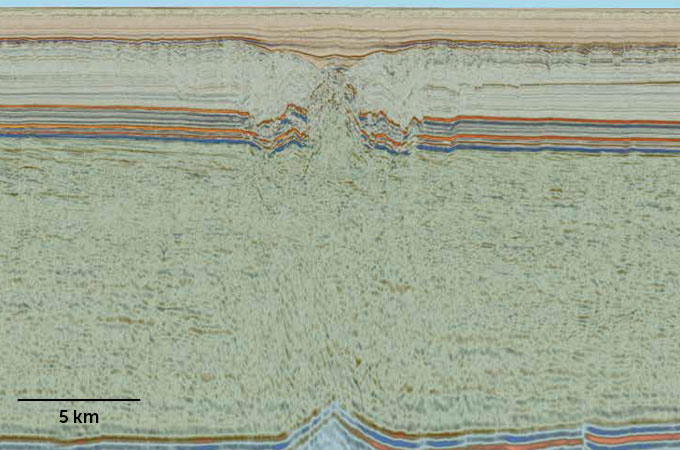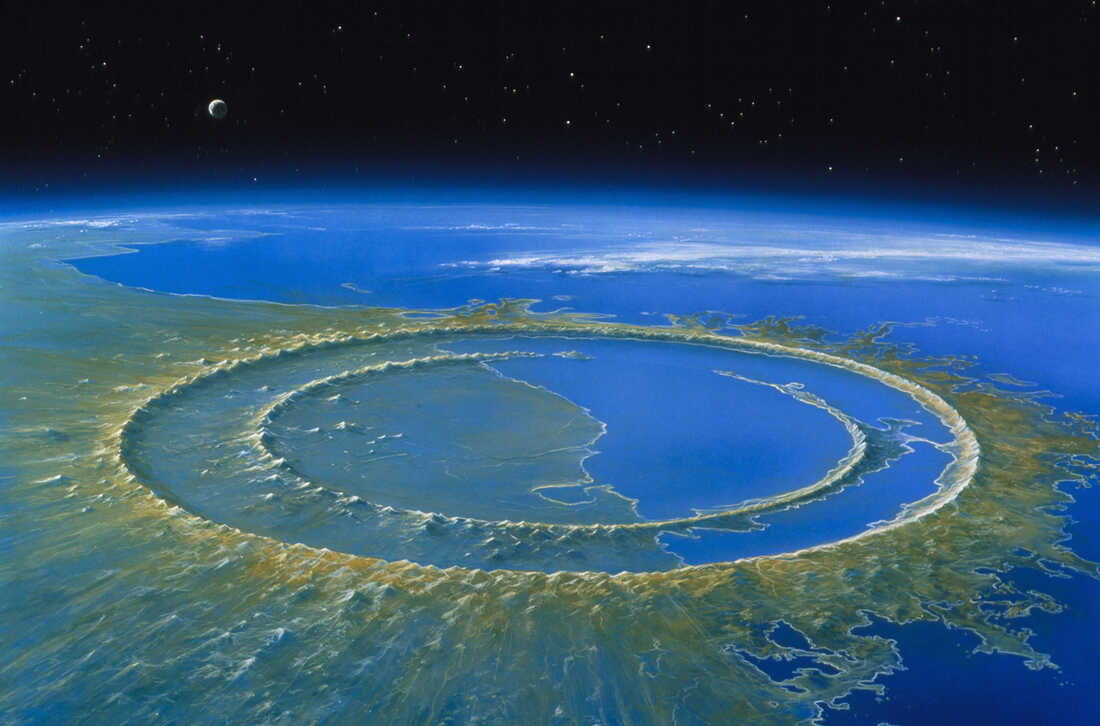Scientists have proven that the Chicxulub crater was formed by the fall of an asteroid that killed most of the dinosaurs. But, as it turned out, it was not the only one responsible for the mass extinction of giant reptiles’ extinction. The deadly asteroid had a “younger sibling”.

Off the coast of West Africa, hundreds of meters below the seabed, scientists have discovered what may be the remains of an 8.5-kilometer-diameter impact crater they named Nadir. The team estimates that the crater was formed 66 million years ago, around the same time that the “dinosaur killer” asteroid Chicxulub crashed into the region of modern-day Mexico. If this is confirmed, it could mean that the dinosaurs died as a result of a double impact of asteroids, reports ScienceNews.
Almost 200 impact craters have been discovered on Earth. The vast majority of them are on land. According to planetary scientist Veronica Bray University of Arizona (Tucson), this is because impact craters in the sea are gradually buried under sediment, making the Nadir structure a valuable scientific find.

Features of an impact crater
Geologist J. Nicholson of Heriot-Watt University in Edinburgh noticed the pattern while analyzing data collected by seismic waves transmitted underground to identify physical structures off the coast of Guinea. At a depth of a kilometer, the scientist saw a cup-shaped structure with a pronounced central peak, a feature that resembled an impact crater. Based on the dimensions of the structure, the researchers estimated that the asteroid was about 400 meters wide when it fell. According to researchers, the impact of the asteroid shook the Earth with a magnitude 7 earthquake and caused a tsunami hundreds of meters high.

I
“The fall of a 400-meter asteroid was much less destructive than the impact of the Chicxulub asteroid, which was about 10 kilometers wide. It is unlikely that the fall of one asteroid would have caused global consequences. But together they definitely accelerated the extinction of dinosaurs,” says Michael Rampino, a geologist from New York University.
Bray and her colleagues are currently negotiating funding to collect samples from the crater, with plans to drill in 2024.
We will remind you that recently the Earth was threatened by a collision with an asteroid that flew at a distance of only 3000 km from its surface.
